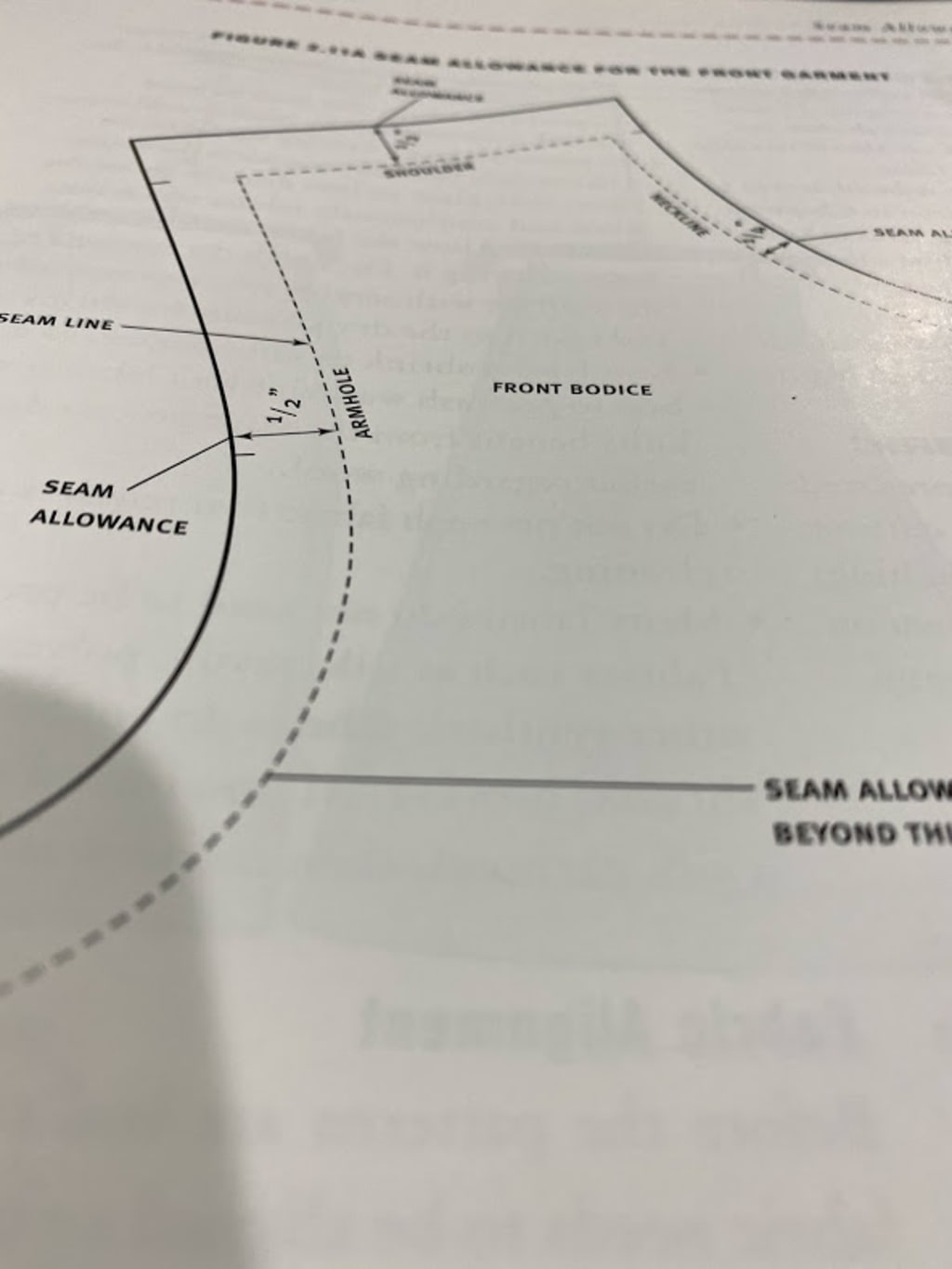
Seam allowances, what are they? Why are they important? And can you live without them? Well no, because everything has seam allowances. From bedding, to garments, fabric on chairs, anything that needs to be constructed will have a seam allowance. When it comes to fashion on garment construction, seam allowances are the most important part of a pattern. They determine the overall look of a garment. A seam allowance that is wrongly placed, will add unnecessary bulkiness. A seam allowance that is incorrectly stitched will cause the garment to look misshaped and unflattering.
If there was a hierarchy in construction, it would be as follows: knowing fabric grain lines and putting fabric on grain, then patterns and their markings, followed by seam allowances, measuring, and math. Putting fabric on grain and knowing how to identify markings and how to place them on the fabric is key to any successful project. Correct stitching begins with correct pattern markings and pattern placement. But none of this matters if we know nothing about seam allowances. Seam allowances are what holds all the pieces together. Without proper knowledge of seam allowances, our projects will not turn out properly, no matter how perfect our patterns are or how prepped our fabric is. Without seam allowances, our project will fall apart.
The importance of measuring
Measuring precisely, like baking, is another important tool in the hierarchy of construction. It is the most important part in creating a seam allowance. If you do not measure properly or cannot read the specific pattern making ruler, there is no way you can make a truly successful garment. The knowledge of measurements is crucial for accurate pattern making and stitching. Guessing about measurements is never going to be good enough, especially when it comes to seam allowances.
Seam allowances
A seam allowance is the space between the seam line and the edge of the pattern, or the seam line and the cut fabrics edge depending on if you are creating your own patterns or not. The seam allowance is usually hidden after stitching, unless the garment has exposed seam allowances, which will then in turn be shown on the correct side of the garment. This is known as a deconstructed look.
If you look at the clothing you are wearing at this moment. You will see seam allowances on the inside of the garment at the side seam, the shoulder, the pant leg, the neckline anywhere that two pieces of fabric are sewn together.
On patterns that are store bought, like Mccalls, vogue, butterick etc, they will have a specific seam allowance added to their patterns, generally it will be a ⅝ inch seam allowances on the side seam, armhole and shoulder seam. This will be built into the pattern, it will not be indicated on the pattern paper. The neck and hem allowance differ. The neck area usually has a ¼ inch seam allowance. The hem allowance is between 2 inches, to ½ inch depending on the design
In the industry, when you make your own patterns from scratch, the seam allowance for the shoulder, side, and armhole seam allowances are about ½ inch. This can also vary depending on your design, however, the amount of seam and hem allowance that is added determines whether the garment can be stitched properly. If the seam allowance is too small, it will be almost impossible to stitch the garment, alternatively, if the seam allowance is too wide, then bulk will be added, and bulk spoils the look of the garment when it is worn.
Woven fabric frays and the seam allowance protects the stitches. The seam allowance is what allows the garment to be fitted to the body. The seam allowance can be stitched wider if the garment is too big, or let out if the garment is too tight. Determining how much seam allowance you will add determines entirely on you. The most important thing to do is to practice to try out different seam allowance measurements and see how they look after they are stitched. When you decide on the correct seam allowance for you, make sure to keep it consistent among all pattern pieces. As a rule, when a seam is enclosed or shaped, like a curved neckline or collar seam, allow for a ¼ inch seam allowance. It is much easier to stitch a narrower seam around a curved seam.
One last thing to keep in mind. When we get further into fabric manipulation, gathers, pleats, tucks, flounces, and so on. In order to achieve these manipulations, we play within the seam allowance. Everything from adding fullness, to knife pleats all get stitched within the ½ inch seam allowance. The seam allowance may be small, but it has significant purpose in the construction of any garment.






Comments
There are no comments for this story
Be the first to respond and start the conversation.